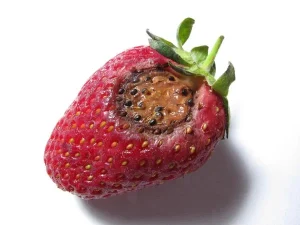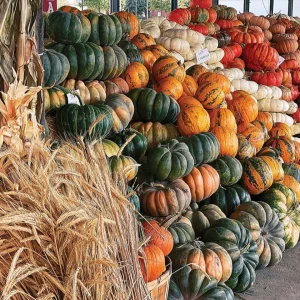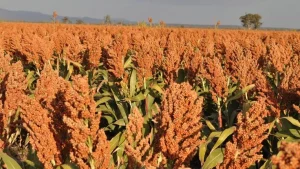
Ginger (Zingiber officinale) is one of the world’s most valuable spices, and it is prized for its rich flavor, medicinal properties, and wide range of culinary uses. Beyond the kitchen, it plays a vital role in the pharmaceutical and cosmetic industries, making it a profitable cash crop for farmers.
In Kenya, ginger farming has been steadily gaining ground as farmers tap into both local consumption and export markets. Globally, demand for ginger continues to rise, driven by its health benefits and growing popularity in natural remedies and wellness products. This creates immense opportunities for farmers, but also comes with significant challenges.
One of the biggest threats to profitable ginger farming is disease infestation. Fungal, bacterial, and nematode infections can cause severe yield losses, reduce quality, and even wipe out entire fields if not correctly managed. For this reason, effective disease management is not just an option but a necessity for every ginger farmer.
As we discussed in our article on ginger farming, successful cultivation doesn’t just depend on soil type, climate, or good agronomic practices. Managing diseases effectively is equally important in ensuring high yields, consistent quality, and long-term profitability.
Major Diseases Affecting Ginger
1. Soft Rot (Pythium spp.)
Cause
Soft rot is one of the most destructive diseases of ginger, caused by soil-borne fungi of the Pythium species. The fungus thrives in warm, humid conditions and poorly drained soils, making it a common problem in many ginger-growing regions.
Symptoms
- Gradual yellowing of leaves, starting from the lower leaves and progressing upward.
- Soft, water-soaked rhizomes that become mushy when pressed.
- A characteristic foul smell emanates from the decayed rhizomes.
- In advanced stages, the entire plant wilts and collapses, leading to total crop loss.
Control Measures
- Use disease-free seed rhizomes: Select healthy planting material from trusted sources to avoid introducing the pathogen into the field.
- Improve soil drainage by Planting on raised beds or ridges to prevent waterlogging, as stagnant water encourages fungal growth.
- Seed treatment: Treat rhizomes before planting with recommended fungicides (e.g., metalaxyl) or biological agents such as Trichoderma spp.
- Crop rotation: Rotate ginger with non-host crops like cereals or legumes for at least 2-3 years to break the disease cycle.
- Field sanitation: Remove and destroy infected plants to reduce the spread of the fungus.
Soft rot can cause devastating yield losses if left unmanaged, but with proper prevention and early control measures, farmers can significantly reduce its impact.
2. Bacterial Wilt (Ralstonia solanacearum)
Cause
Bacterial wilt is a highly destructive disease of ginger caused by the soil-borne bacterium Ralstonia solanacearum. It spreads rapidly through contaminated soil, water, and planting materials. Once established in a field, the bacteria can persist for years, making management difficult.
Symptoms
- Sudden wilting of plants even when the soil has sufficient moisture.
- When infected rhizomes or stems are cut, a milky bacterial ooze can be observed, often accompanied by a sour smell.
- Yellowing and drying of leaves, starting from the lower leaves and progressing upwards.
- In severe cases, plants collapse completely, leading to significant yield losses.
Control Measures
- Use resistant or tolerant varieties where available, as these have better chances of survival in infested soils.
- Practice crop rotation with non-host crops such as cereals or legumes for 3–4 years to reduce bacterial populations in the soil.
- Destroy infected plants immediately by uprooting and burning them to prevent spread.
- Maintain strict field hygiene by cleaning tools, avoiding movement of contaminated soil, and ensuring irrigation water is not carrying the bacteria.
- Use clean, disease-free planting materials sourced from trusted suppliers.
Bacterial wilt is considered one of the toughest diseases to manage in ginger, but adopting strict preventive and hygiene measures can go a long way in protecting crops.
3. Leaf Spot (Phyllosticta zingiberi)
Cause
Leaf spot in ginger is caused by the fungus Phyllosticta zingiberi. The disease primarily affects the foliage and thrives in humid, warm conditions, particularly in fields with dense plant populations or limited airflow.
Symptoms
- The disease begins with the appearance of small, brown, or black spots on the leaf surface.
- Over time, the spots enlarge and merge, causing large portions of the leaf to dry up.
- Severe infection leads to premature leaf drop, leaving plants weak and unable to photosynthesize effectively.
- This ultimately results in a reduction in photosynthesis and yield, as plants cannot produce enough food to support rhizome development.
Control Measures
- Apply fungicides, such as copper-based formulations or other recommended products, at the early stages of infection to minimize the spread.
- Maintain proper plant spacing to allow adequate air circulation, reducing humidity around the crop.
- Remove and destroy infected leaves to reduce sources of fungal spores in the field.
- Mulching with clean organic material can help minimize splash dispersal of fungal spores during rainfall or irrigation.
Leaf spot is generally less destructive than soil-borne diseases like soft rot and bacterial wilt, but if left unchecked, it can still cause significant yield losses, especially in humid environments.
4. Rhizome Rot (Fusarium spp.)
Cause
Rhizome rot in ginger is caused by fungi of the Fusarium species, which are common soil inhabitants. These fungi attack the rhizomes directly, especially under conditions of poor soil health, high humidity, and continuous monocropping of ginger. Once the pathogen establishes in the soil, it can persist for years, making management difficult without proper preventive measures.
Symptoms
- Shriveling and drying of rhizomes, often making them lightweight and unmarketable.
- Stunted plant growth, as infected rhizomes fail to provide sufficient nutrients to the plant.
- Browning of rhizome tissue when cut open, often accompanied by internal rotting.
- In advanced infections, plants may appear weak and fail to develop healthy shoots, resulting in reduced yields.
Control Measures
- Soil solarization before planting: Covering moist soil with transparent polythene sheets for 4-6 weeks during the hot season helps kill fungal spores and reduces pathogen loads.
- Crop rotation with cereals such as maize, sorghum, or millet helps break the disease cycle, as these crops are not hosts for Fusarium.
- Application of bio-fungicides containing Trichoderma spp. Improves soil health and suppresses Fusarium activity through natural antagonism.
- Use of well-drained soils and avoiding over-irrigation can also reduce disease incidence.
Rhizome rot often goes unnoticed until it has already caused severe damage to yield and rhizome quality, making early prevention and soil management critical for long-term ginger farming success.
5. Damping-Off (Pythium spp. and Fusarium spp.)
Cause
Damping-off is a common fungal disease in ginger nurseries and is caused mainly by soil fungi such as Pythium spp. and Fusarium spp. It primarily affects young seedlings soon after sprouting, especially under humid and poorly drained conditions. Since it attacks at the early growth stage, damping-off can severely reduce plant populations and compromise future yields.
Symptoms
- Seedlings collapse and die shortly after emergence, leading to poor crop establishment.
- A brownish or blackened stem base is visible near the soil line, often soft and water-soaked.
- Infected seedlings topple over easily when touched, as the fungus weakens their root and stem structure.
Control Measures
- Treat planting material with fungicides or bio-control agents before sowing to reduce fungal spores on seed rhizomes.
- Avoid overwatering, as excess moisture creates favorable conditions for fungal growth.
- Use raised nursery beds to improve drainage and reduce waterlogging.
- Maintain nursery hygiene by sterilizing soil (through solarization or organic amendments) and removing infected seedlings immediately.
Damping-off may seem like a minor nursery problem, but it can cause significant stand losses if not properly managed. By ensuring clean planting material and adopting preventive nursery practices, farmers can minimize early-stage crop failure.
6. Yellow Disease (Meloidogyne spp. – Nematodes)
Cause
Yellow disease in ginger is caused by root-knot nematodes, primarily Meloidogyne species. These microscopic worms live in the soil and attack ginger roots, creating wounds that interfere with water and nutrient uptake. Nematode infestations not only weaken plants but also make them more vulnerable to secondary infections like fungal rots.
Symptoms
- Yellowing of leaves, often starting at the leaf tips and spreading throughout the plant.
- Poor rhizome development results in smaller, lightweight, and low-quality rhizomes.
- On inspection of the roots, root galls (swellings) are visible, a typical sign of nematode damage.
- In heavily infested fields, plants appear stunted and unproductive, leading to reduced yields.
Control Measures
- Apply neem cake or organic amendments to the soil, which act as natural nematicides while also improving soil fertility.
- Practice crop rotation with non-host crops such as maize, beans, or cereals to reduce nematode populations in the soil.
- Use nematode-resistant or tolerant varieties where available to minimize damage.
- Solarize nursery soil before planting to kill nematode eggs and larvae.
- Incorporate bio-control agents like Paecilomyces lilacinus or Trichoderma spp. to suppress nematode activity naturally.
Nematode infestations often go unnoticed until serious damage is done underground. Regular field monitoring, combined with preventive soil and crop management practices, is essential for long-term control of yellow disease in ginger.
7. Other Minor Diseases
In addition to the major diseases that severely affect ginger, farmers also encounter several minor but important diseases that can reduce yield and quality if not addressed. These include:
- Anthracnose (Colletotrichum spp.)
- Cause: A fungal infection common in humid regions.
- Symptoms: Appears as dark, sunken lesions on leaves and stems, often leading to leaf blight. Infected leaves dry prematurely, reducing photosynthesis.
- Control Measures: Spray with recommended fungicides, maintain proper spacing to reduce humidity, and remove infected plant parts.
- Rust
- Cause: Fungal disease that thrives in moist conditions.
- Symptoms: Formation of reddish-brown pustules on the undersides of leaves. Over time, leaves turn yellow and drop.
- Control Measures: Apply fungicides at early stages, ensure proper field aeration, and destroy infected leaves to reduce spread.
- Storage Rots
- Cause: Fungal infections, often from species like Aspergillus and Penicillium, that occur during post-harvest storage.
- Symptoms: Rotting of rhizomes during storage, often accompanied by discoloration, mold growth, and foul odor.
- Control Measures: Cure and dry rhizomes properly before storage, maintain low humidity in storage facilities, and use clean, ventilated storage structures to prevent fungal buildup.
Although these diseases are not always as devastating as soft rot or bacterial wilt, they can still result in economic losses if ignored. By combining field hygiene, proper spacing, and careful post-harvest handling, farmers can keep these minor diseases under control.
Integrated Disease Management in Ginger
Ginger is highly susceptible to a wide range of fungal, bacterial, and nematode diseases that can drastically reduce yield and quality. Relying on a single control method is rarely effective because pathogens persist in the soil, survive in plant residues, and often re-emerge season after season.
For this reason, Integrated Disease Management (IDM) is the most sustainable approach. IDM combines preventive, cultural, biological, and chemical methods to keep disease pressure low while ensuring healthy crop growth and long-term productivity.
Importance of Combining Multiple Approaches
No single control measure can eliminate all ginger diseases. For example, fungicides may control leaf spot but will not protect against bacterial wilt, while crop rotation may help with nematodes but not with storage rots. By combining methods, farmers can:
- Reduce pathogen buildup in soil.
- Lower the risk of crop failure.
- Minimize reliance on chemical pesticides.
- Enhance soil and plant health for higher yields.
Integrated disease management ensures that ginger farming remains both profitable and environmentally sustainable.
Preventive Measures
The first line of defense in ginger disease management is prevention. Farmers can reduce disease incidence significantly by adopting these practices before planting:
- Soil testing: Helps identify pathogen presence, nutrient deficiencies, and pH imbalances that may favor disease outbreaks.
- Certified seeds: Always plant disease-free rhizomes from trusted sources to avoid introducing pathogens into the field.
- Crop rotation: Rotate ginger with non-host crops such as maize, sorghum, or beans for 2-3 years to break the life cycle of soil-borne pathogens.
- Site selection: Choose well-drained soils with good organic matter to minimize risks of rot and wilt.
Cultural Practices
Proper field management reduces disease pressure during the growing season. Some recommended practices include:
- Good field drainage: Waterlogged soils create ideal conditions for soft rot and rhizome rot. Raised beds and ridges ensure water flows away from ginger roots.
- Mulching: Applying organic mulch regulates soil moisture, suppresses weed growth, and reduces soil splash that spreads fungal spores.
- Proper spacing: Adequate plant spacing improves airflow around the crop, lowering humidity and reducing foliar diseases like leaf spot and rust.
- Sanitation: Remove and destroy diseased plants immediately to prevent the spread of pathogens. Tools should be disinfected regularly, especially after handling infected crops.
Biological Control
Biological methods are eco-friendly and help improve soil health while keeping pathogens in check. Common approaches include:
- Trichoderma spp.: Beneficial fungi that suppress soil-borne pathogens such as Fusarium and Pythium through competition and parasitism. They can be applied as seed treatments or soil amendments.
- Neem extracts and neem cake: Act as natural fungicides and nematicides, reducing populations of root-knot nematodes and other soil pests.
- Beneficial microbes: Bacteria like Bacillus subtilis and Pseudomonas fluorescens enhance root health and offer protection against multiple pathogens by boosting the plant’s natural defenses.
These biological controls also improve soil fertility, making them a long-term solution for sustainable ginger farming.
Chemical Control
While chemicals should not be the first option, they are sometimes necessary to manage severe disease outbreaks. Key guidelines include:
- Safe fungicide use: Fungicides like copper oxychloride or mancozeb can be used against leaf spot and rust. Always follow recommended dosages to prevent resistance and residue issues.
- Seed treatment: Treating rhizomes with systemic fungicides before planting reduces initial fungal infections.
- Antibiotics: In some cases, antibiotics may be recommended for bacterial wilt, but their use should be guided by agricultural extension officers to prevent misuse.
- Integrated use: Chemicals should always be combined with cultural and biological practices rather than being the sole method of control.
Post-Harvest Management
Diseases do not end at harvest. Poor handling and storage can lead to heavy post-harvest losses from storage rots. Farmers should adopt the following practices:
- Curing: Freshly harvested rhizomes should be cured by drying them under shade for a few days to heal wounds and reduce moisture.
- Proper drying: Rhizomes should be dried in well-ventilated areas to prevent fungal growth.
- Storage conditions: Keep rhizomes in cool, dry, and well-aerated structures. Avoid stacking them in damp environments, which encourages rot.
- Regular inspection: Periodically check stored rhizomes and remove any showing signs of rotting to prevent spread.
By combining prevention, good agronomic practices, biological inputs, judicious chemical use, and proper post-harvest care, farmers can effectively manage diseases in ginger. Integrated Disease Management not only reduces yield losses but also improves soil health, reduces production costs, and ensures the sustainability of ginger farming for years to come.
Linking Disease Management to Profitable Ginger Farming
The profitability of ginger farming is closely tied to the health of the crop. Diseases not only reduce yields but also compromise the size, weight, and quality of rhizomes, which directly affects their market value. By investing in effective disease management practices, farmers can safeguard their harvests and maximize returns.
Healthy crops mean higher yields and premium quality, which fetch better prices in both local and export markets. Disease-free rhizomes are more attractive to buyers and processors, giving farmers a competitive edge. Additionally, well-managed fields experience reduced post-harvest losses, since healthy rhizomes are less prone to rotting during storage and transport. This ensures more of the harvest reaches the market in good condition.
Another important benefit is cost efficiency. While preventive measures such as crop rotation, soil treatment, and use of certified seeds may require initial investment, they significantly lower long-term production costs by reducing reliance on expensive chemicals and minimizing losses caused by replanting or crop failure.
As we discussed in our ginger farming article, successful cultivation is not only about proper land preparation and agronomic practices; it also depends heavily on disease management. When farmers integrate preventive, cultural, biological, and chemical strategies into their production systems, they lay the foundation for sustainable, profitable, and resilient ginger farming.
Conclusion
Ginger farming presents a profitable opportunity for farmers, but its success depends heavily on how well diseases are managed. From devastating threats like soft rot and bacterial wilt to less severe but still damaging issues such as leaf spot, rhizome rot, and storage rots, each disease poses unique challenges. By recognizing the symptoms early and applying integrated control measures, farmers can protect their crops, secure higher yields, and maintain quality.
The key to long-term success lies in Integrated Disease Management (IDM), combining preventive practices, cultural methods, biological solutions, judicious chemical use, and proper post-harvest handling. With these strategies in place, farmers not only reduce losses but also improve profitability and sustainability. For a more comprehensive understanding of how to establish and run a successful ginger enterprise, see our full guide on ginger farming




